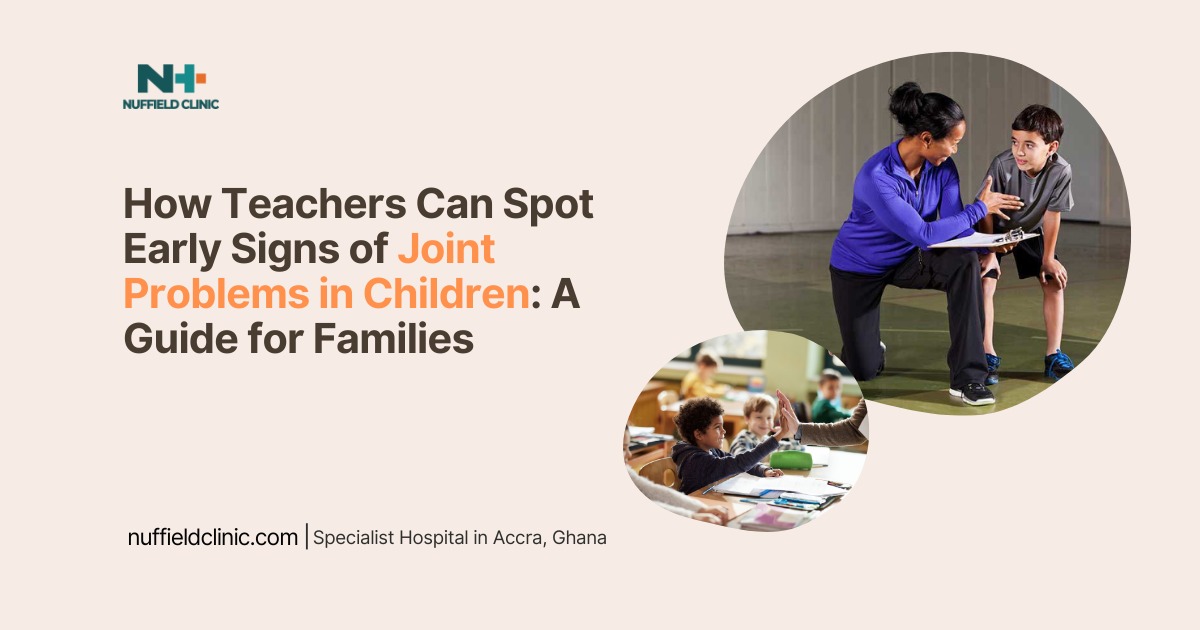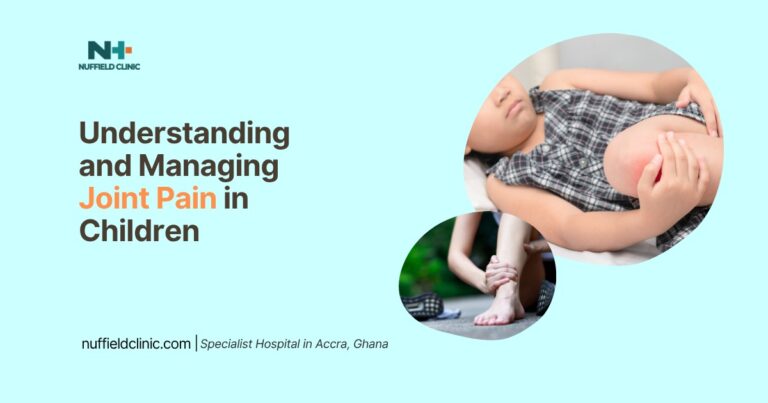How Teachers Can Spot Early Signs of Joint Problems in Children: A Guide for Families

What role can teachers play in helping to detect serious joint conditions in kids? Children spend a large portion of their day in school, where teachers observe how they move, play, and participate in daily routines. This consistent exposure means educators are often among the first to notice if a child is limping, avoiding certain movements, or behaving differently.
Many joint issues in children can begin subtly. While some discomforts are harmless and temporary, others may be early signs of serious health conditions that require prompt medical attention.
Conditions such as Juvenile Idiopathic Arthritis (JIA), septic arthritis, or other orthopaedic concerns may appear as simple complaints of pain or stiffness. However, early detection and timely intervention can prevent permanent joint damage, vision loss, and other complications. For families, this means teachers’ observations can offer vital clues that something is amiss; insights that might be harder to detect at home, especially if symptoms are mild or fluctuate throughout the day.
Joint Issues in Kids
Children may complain about joint or muscle pain from time to time. Often, these are caused by benign issues like “growing pains,” minor injuries from active play, or temporary joint inflammation after a virus. These typically resolve on their own. However, when pain persists, interferes with movement, or is paired with other symptoms, it could signal a more serious underlying condition.
Some joint issues are inflammatory, such as JIA, which can cause chronic joint swelling, stiffness (especially in the morning), and fatigue. Others may be infectious, such as septic arthritis or osteomyelitis, which are medical emergencies. There are also developmental conditions, including Legg-Calve-Perthes disease or Slipped Capital Femoral Epiphysis, which may present with limping and hip or knee pain. These disorders require early diagnosis to prevent long-term disability.
More rarely, joint pain may be linked to autoimmune disorders like lupus or even childhood cancers, including Leukaemia or bone tumours. These may be accompanied by symptoms like weight loss, night sweats, or unexplained fatigue.
What Teachers Might See at School
Because they witness children in both structured and unstructured settings, teachers may notice important physical changes. For example, a child who consistently limps after recess or has trouble keeping up during physical activities might be experiencing joint pain. Teachers may also observe stiffness when a child stands up after sitting, or swelling in the knees or fingers. Children might avoid certain movements, cradle an arm, or show signs of pain during specific tasks.
These patterns can offer important insights. A limp that appears every morning but resolves by lunch could suggest inflammatory arthritis, while a sudden refusal to walk might indicate an acute issue such as an infection or fracture.
Pain is often silent, so teachers may need to rely on indirect signs, grimacing, guarding a limb, or avoiding previously enjoyed activities. Fatigue, too, might appear as sluggishness or trouble concentrating. These signs often emerge gradually, which is why school staff, who see children every day, are in a unique position to notice them.
Emotional and Functional Clues
Joint problems affect more than just movement. Children in pain may become irritable, withdrawn, or anxious. They might avoid friends, grow frustrated with tasks they once handled easily, or feel embarrassed about falling behind. Adolescents, in particular, may downplay their discomfort to avoid standing out.
Functionally, school-related tasks such as writing, climbing stairs, or participating in gym class may become difficult. A child may struggle to hold a pencil, tire quickly when walking between classes, or be slow to dress for PE. These changes can affect academic performance, attendance, and self-esteem.
How to Recognise Serious Concerns
Not every ache signals something severe, but certain signs should prompt parents to seek medical evaluation. If a child has joint pain that lasts more than a few days or if it worsens over time, this deserves attention. Pain that wakes a child at night, limits their ability to participate in play or school activities, or is accompanied by fever, swelling, fatigue, or rash may be a sign of a more serious condition.
Some signs demand urgent care. These include:
- Sudden severe joint pain, especially with fever
- Complete inability to walk or bear weight
- Visible deformity or unusual leg positioning
- Swelling that is warm or red
- A child appearing drowsy, floppy, or rapidly worsening
In such cases, it is safest to seek emergency medical attention.
Teachers as Health Allies
Teachers are not expected to diagnose, but they can play a critical role by noticing changes, documenting what they see, and gently raising concerns with parents. This might include sharing specific observations like, “I’ve noticed your child limping after lunch every day this week,” or “They seem to be struggling with writing tasks more than usual.”
These conversations should be respectful and focus on care, not alarm. Teachers may also work with school nurses to report concerns and determine next steps. In some situations, school staff are also required to report concerns if an injury seems suspicious or inconsistent with a child’s developmental abilities.
Supporting Children with Joint Conditions
Once a diagnosis is made, many children continue to thrive with appropriate support at school. Classroom accommodations, like extra time for writing, adaptive tools, or allowing frequent movement breaks, can help children manage pain and stay engaged. Mobility support may be needed, such as help with stairs or carrying materials. During flare-ups, flexibility with PE or attendance can make a big difference.
It is also important to foster an inclusive and compassionate environment. Children with joint issues may look fine on the outside, but still be dealing with pain or fatigue. Believing their experience, offering discreet help, and encouraging peers to be supportive can protect their emotional well-being.
Families, educators, and medical professionals each bring a piece of the puzzle when it comes to identifying and managing joint problems in children. The earlier these concerns are noticed, the better the outcomes can be. For families, maintaining open communication with teachers and staying alert to changes at home, such as a child who avoids play or struggles to get out of bed, can complement the observations made at school.
In this collaborative approach, no one is asked to act alone. Instead, it becomes a shared commitment to a child’s health, comfort, and ability to participate fully in life.
If you have any concerns about your child’s joints, movement, or pain, book a consultation with a specialist at Nuffield Clinic today.







